#Sir Edwin Lutyens
Explore tagged Tumblr posts
Text

Page Street Housing, Sir Edwin Lutyens, Westminster 1928 ..
27 notes
·
View notes
Text










Visited Hestercombe Gardens. This place is absolutely amazing. I highly recommend a visit. Formal gardens were designed by Gertrude Jekyll and Sir Edwin Lutyens. Absolutely gorgeous 😍.
#hestercombe gardens#photography#landscape#formal garden#gertrude jekyll#sir edwin lutyens#sept 2023#sunshine#somerset
5 notes
·
View notes
Text
THE STONE OF REMEMBRANCE
The sunken Garden of Remembrance surrounds a Stone of Remembrance of Irish granite symbolising an altar, which weighs seven and a half tons
GARDEN OF REMEMBRANCE IN ISLANDBRIDGE The sunken Garden of Remembrance surrounds a Stone of Remembrance of Irish granite symbolising an altar, which weighs seven and a half tons. The dimensions of this are identical to First World War memorials found throughout the world. During the construction phase in order to provide as much work as possible the use of mechanical equipment was restricted,…

View On WordPress
#Fotoniqe#FX30#Imperial War Graves Commission#Infomatique#Irish granite#IWGC#Sir Edwin Lutyens#Sony#standardised design for war memorials#Stone of Remembrance#symbolising an altar#The sunken Garden of Remembrance#William Murphy
1 note
·
View note
Text

Members of the Royal Family in front of a Windsor memorial to King George V. The new King unveiled the outdoor memorial (the work of Sir Edwin Lutyens) and made his first public speech since his accession. // April 23, 1937
57 notes
·
View notes
Text
Queen Mary's dolls' house
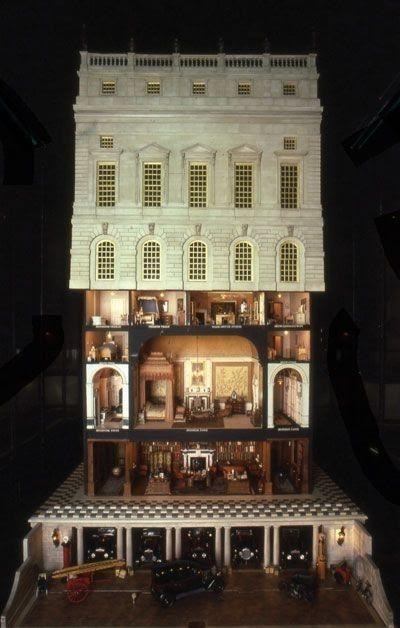
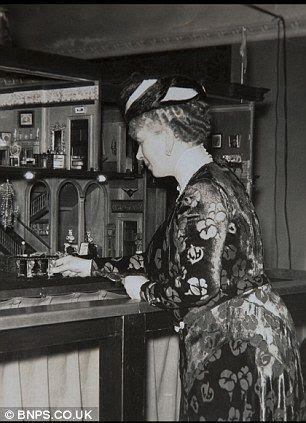
The idea for building the doll's house came from the Queen's cousin, Princess Marie Louise, who discussed her idea with one of the top architects of the time, Sir Edwin Lutyens, at the Royal Academy Summer Exhibition of 1921. Sir Edwin agreed to construct the dollhouse and began preparations. It was created as a gift to Queen Mary from the people, and to serve as a historical document on how a royal family might have lived during that period in England. Today Queen Mary's dolls' house is exposed in Windsor Castle, UK.
#queen mary#british royal family#queen mary of teck#brf#dollhouse#england#united kingdom#uk monarchy#royal family#ukfanpage
44 notes
·
View notes
Text



Poet Scarlett Sabet looking absolutely stunning in a Suzannah London dress.
The dress is called Cleo, see video, but in a full length version here
She wore this to the UK Ambassador's residence in Washington DC on September 19, 2024. (The residence was designed by Sir Edwin Lutyens who also designed Jimmy Page's country home.)
The Ambassador honored Jimmy Page for his contribution to music and his philanthropic efforts in Brazil.
Poet Scarlett looked like a doll! Jimmy Page must pinch himself.
Photos, Video: Scarlett Z Sabet Instagram, Suzannah London
7 notes
·
View notes
Text
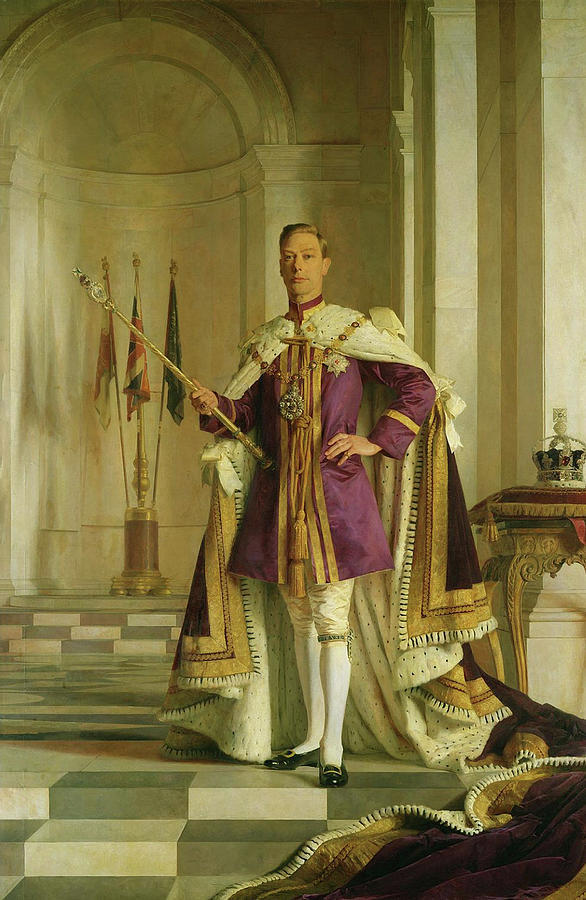
George VI Of The United Kingdom
Artist: Gerald Kelly (American, 1879–1972)
Title: George VI (1895-1952)
Genre: Portrait
Date: Between 1938 and 1945
Medium: Oil on Canvas
Collection: Royal Collection, Windsor Castle
Description
Full-length portrait of the King, standing in an interior based on the Viceroy's Building, Delhi, wearing Coronation robes with collar, star and garter of the Order of the Garter. His left hand is resting on his hip while he is holding the sceptre in his right hand. The Imperial State Crown rests on a cushion on a table to the right and three flags are visible in the background, inside a niche.
Kelly was initially commissioned to paint the state portraits of George IV and Queen Elizabeth in 1938. He started immediately and was nearly finished by the outbreak of the Second World War in 1939. The paintings were moved from his studio in London to Windsor Castle where Kelly spent the next five years completing his commission. Not only did the Castle provide a refuge for Kelly, the young Princesses Elizabeth and Margaret Rose were sent to the safety of Windsor for the duration of the war while their parents remained at Buckingham Palace.
The backdrop of this painting was originally intended to be the doors of the Crimson Drawing Room. Kelly later changed his mind and asked his friend Sir Edwin Lutyens to make a model, based on the Viceroy's House in Delhi, which makes the painting appear more spacious and stately.
#portrait#george VI of the united kingdom#coronation robes#gerald kelly#Sceptre#imperial state crown#flags#british royalty#royal family#king george vi
8 notes
·
View notes
Text
‘Amrit Udyan’ - a representation of Earthly Utopia!
The Mughal Garden, now known as Amrit Udyan of Rashtrapati Bhavan, has been open to the public since February 2, 2025. From the opulence in flora to architecture, there is nothing that you can miss. Spread over a vast expanse of 15 acres, Amrit Udyan has often been portrayed, and deservedly so, as the soul of the Rashtrapati Bhavan. The doors of Amrit Udyan open in spring to celebrate the garden's beauty, India's heritage, and ecological knowledge.
Amrit Udyan represents the Mughals and their love for gardens. As mentioned in Babur Nama, Babur's favorite type of garden was the Persian Charbagh style (literally, four gardens). These types of gardens can be found across lands previously ruled by the Mughals.
Inspired by the Mughal Gardens, Amrit Udyan, earlier known as the Mughal Garden, was laid out. Sir Edwin Lutyens was assigned the task of designing it on Raisina Hill, where Amrit Udyan is situated. Roses have been the prime attraction since their plantation in 1928. The garden features a central lawn, floral signage, circular garden, floral clock, and a 225-year-old Sheesham Tree in Bal Vatika, a garden curated for children. The strong fragrance of roses and the peacocks passing through the lawns make it a perfect match and one of the strong reasons for tourist attraction. The architecture signifies the history of India as an independent country that will surely one day be one of the developed nations.
G.I tag-approved products, a variety of sarees, wall hangings, and accessories from different parts of the country are brought to a single place called the Souvenir Shop. To promote the growth and development of Self-Help Groups, they have been allowed to represent their products in the Souvenir Shop.
Food courts representing different states of India and their famous street foods are also part of this celebration. The festival showcases the country's rich culture and customs along with its ecological knowledge in Amrit Udyan.
Looking forward to many successful Amrit Udyan celebrations in the coming future, I highly recommend it to everyone, from toddlers to elderly citizens. Enjoy the spring season while admiring the beauty of Amrit Udyan. Please note that it remains closed on every Monday for restoration purposes.
For more info : https://pib.gov.in/PressReleaseIframePage.aspx?PRID=2098410
For tickets : https://visit.rashtrapatibhavan.gov.in/visit/amrit-udyan/rE









2 notes
·
View notes
Text



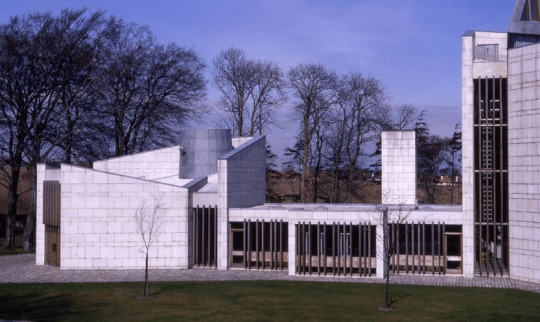




On 13th August 1907 Scottish architect, Sir Basil Spence, was born.
Spence was born in Bombay, India, his education began at the John Connon School, operated by the Bombay Scottish Education Society, he was then sent back to Scotland to attend George Watson's College in Edinburgh from 1919–1925. He enrolled at Edinburgh College of Art in 1925, studying architecture.
In 1929–1930 Spence spent a year as an assistant, along with William Kininmonth, in the London office of Sir Edwin Lutyens, whose work was to have a profound influence on his style, where he worked on designs for the Viceroy's House in New Delhi, India.
While in London he attended evening classes at the Bartlett School of Architecture under A. E. Richardson. Returning to Edinburgh College of Art in 1930 for his final year of studies, he was appointed a junior lecturer, despite the fact that he was still a student. He continued to teach there until 1939.
Basil Spence is arguably the most internationally renowned 20th-century architects, known principally for his breath-taking work rebuilding Coventry Cathedral. Spence was an eclectic architect whose work ranged from vernacular-styled fisherman’s dwellings in Dunbar to opulent traditional country houses to ultra-modern pieces like the Edinburgh University library. He has been compared to Robert Adam by some for his detailed attention to interiors. Some of his work might have been criticized but my favourite of his in Edinburgh has stood the test of time as other buildings of the 60’s and 70’s have been pulled down. The Scottish Widows Building at Dalkeith Roads on the south side of Edinburgh is in my opinion beautiful, it’s hexagonal bronze-tinted glassy exterior with the water reflecting the sun onto it at times and of course the backdrop of Arthur’s seat helps. The views out to Arthur’s seat and Edinburgh on the upper floors must be a joy for those that work there.
Although known for his modern work, which isn’t to everyone's liking some of his designs are more classical, like Glenwood at Glenlockhart Road, Edinburgh as seen in pic three, and Murrayfield Golf Clubhouse in the next photo. The other photos are of the man himself and Coventry Cathedral.
Pics are of Bsil Spence, Morton Hall Crematorium, New Zealands Government Building, "The Beehive". Sussex University Meeting Room and Coventry Cathedral.
6 notes
·
View notes
Text
India Gate
Location: Delhi, 🇮🇳
About : India Gate
The India Gate (formerly known as All India War Memorial) is a war memorial located near the Kartavya path on the eastern edge of the "ceremonial axis" of New Delhi, formerly called Rajpath. It stands as a memorial to 84,000 soldiers of the Indian Army who died between 1914 and 1921 in the First World War, in France, Flanders, Mesopotamia, Persia, East Africa, Gallipoli and elsewhere in the Near and the Far East, and the Third Anglo-Afghan War. 13,300 servicemen's names, including some soldiers and officers from the United Kingdom, are inscribed on the gate. Designed by Sir Edwin Lutyens, the gate evokes the architectural style of the ancient Roman triumphal arches such as the Arch of Constantine in Rome, and later memorial arches; it is often compared to the Arc de Triomphe in Paris, and the Gateway of India in Mumbai.
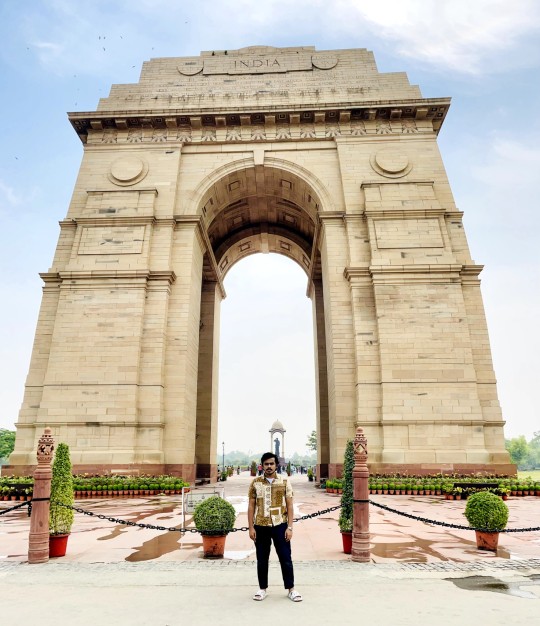
3 notes
·
View notes
Text

Need to keep this Pre-Post Modernism discussion going for ELL. Another gem. IBritannic House also preempts Mies’s quote ‘God is in the detail” in a way that there is a certain kind of humorous architecture that frames Modernism following a classical tradition.; a Pre-Modernism; indeed Lutyens was warning us!
"Britannic House: Lutyens's Fusion of Business and Artistry in London's Architectural Tapestry"
Britannic House, designed by Sir Edwin Landseer Lutyens, stands proudly on the north-west side of Finsbury Circus, London EC2. Originally crafted for the Anglo-Persian Oil Company, later evolving into British Petroleum, this architectural masterpiece is a testament to Lutyens's prowess in business structures.
Hitchcock, in his comprehensive history of architecture, hails Britannic House as Lutyens's triumph in big business building. Completed in 1924-7, its strategic location between Finsbury Circus and Moorgate Street provides an eastern front adorned with Baroque drama, skillfully interwoven with playful seventeenth-eighteenth-century detailing.
Exploring Lutyens's approach, similar to the study on his pilasters, Britannic House showcases a narrative of architectural humor. The sculptures, including Sir Francis Derment Wood's Britannia and the Indian Water Carrier, alongside Eric Raymond Broadbent's keystone sculptures, infuse the building with a rich tapestry of cultural and thematic elements.
Dive deeper into Britannia House's connection to Petroleum, the significance of Persian sculptures, and the whimsical dog festooned keystones, unraveling a story where art and business coalesce in the heart of London's architectural landscape.
1 note
·
View note
Text
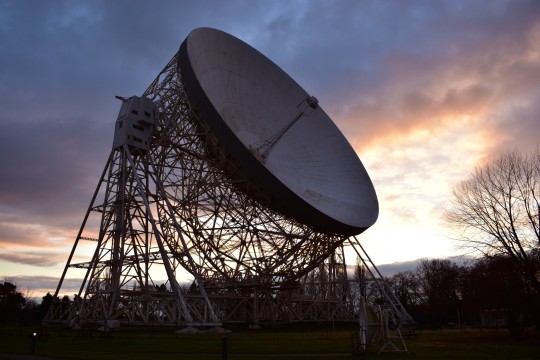
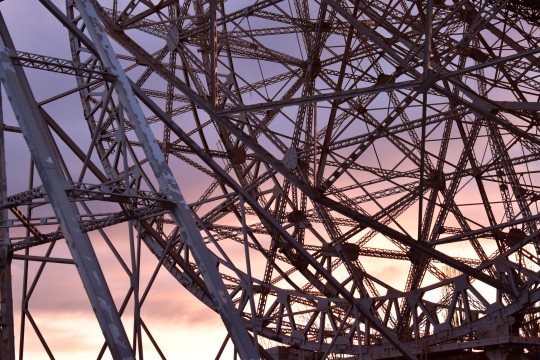

Revisited Jodrell Bank recently, so could take some shots at sunset. There's are my favourites 😍
0 notes
Text
This First World War memorial in Miserden, Gloucestershire, commissioned by local landowner Noel Wills, features a design by Sir Edwin Lutyens. Constructed of limestone, it stands seven metres tall with inscriptions honouring fallen soldiers from both World Wars. Read more here:
0 notes
Text

THE KING UNVEILS THE WINDSOR MEMORIAL
The Royal Borough’s Tribute to the First Sovereign of the House of Windsor and its Site Beneath the Castle Walls // April 23, 1937
The scene after the unveiling by the King on St. George’s Day of the memorial to his father which has been designed by Sir Edwin Lutyens, R.A., erected on a site below the Castle walls presented by Lord Wakefield, and paid for by contributions from the inhabitants of the Royal Borough and of the city of Windsor, Ontario. The ceremony, which was attended by many members of the Royal Family including the Queen, Queen Mary, the Duke and Duchess of Gloucester, and Prince and Princess Arthur of Connaught, started with a short dedication service conducted by the Dean of Windsor and then followed an address from the Mayor in his capacity of Chairman of the Memorial Committee.
GEORGE V MEMORIAL // British Pathé
The King in the course of his reply said: ‘To me personally the memory of my father will always bring the inspiration of a high example. I hope that in trying to fulfil our great responsibilities the Queen and I may be supported by some measure of that trust and affection which were so fully given to him and to my dear mother by the peoples of this country and of the Empire.’
14 notes
·
View notes
Text
Best Places To Visit In Delhi 2025
New Delhi, the capital of India, is a vibrant city that blends history, culture, and modernity. Established as the capital during British rule in 1911, it was designed by British architects Sir Edwin Lutyens and Herbert Baker......Read more

#tourism#travel#travel blog#travel destinations#travel guide#travel photography#travel tips#traveling#explore#tour & travels
0 notes
Text
India's Largest Domes – A Look at the Largest Domes
India has a rich tradition of dome construction, which presents an excellent example of architecture and engineering. Rohtak Domes plays a leading role in building grand and durable domes in India.
Some of the biggest domes in India
1. Gol Gumbaz, Bijapur
It is the largest stone dome in Asia.
The unique structure of the sound gallery makes it special.
2.St. Paul's Cathedral, Kolkata
Built during the British era, it has a beautiful dome in Gothic style.
Its design is a blend of European and Indian architecture.
3. Sri Padmanabhaswamy Temple, Kerala
This temple is famous for its gold plated dome.
It is one of the richest temples in India.
4. Rashtrapati Bhawan, New Delhi
This magnificent dome is part of the official residence of the President of India.
It was designed by Sir Edwin Lutyens.
conclusion
The huge domes of India are a symbol of the richness of architecture and technological development. By combining traditional and modern construction techniques, Rohtak Domes is contributing to the creation of exquisite and magnificent domes.
0 notes